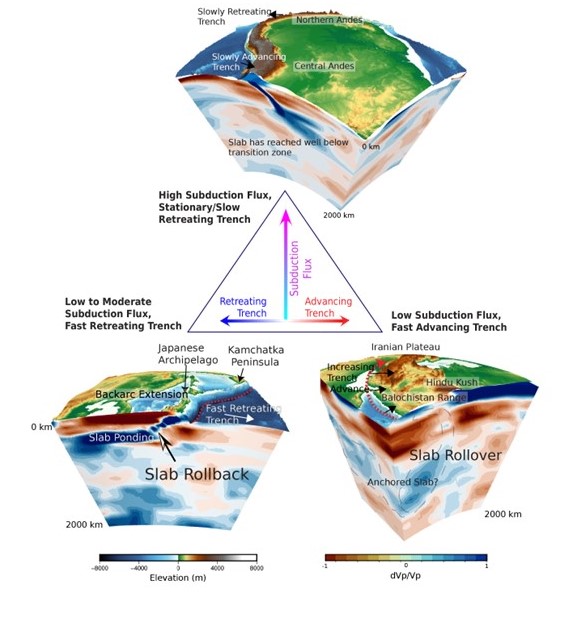- Date: Wednesday, November 13, 2024
- Time: 11 am – 12 pm AEDT
- Location: Room 449 (Conference Room), Madsen (F09), School of Geosciences
- Zoom Link: https://uni-sydney.zoom.us/j/84531445379?from=addon
Topographic Evolution of Active Margins: Exploring the Interplay of Plate Tectonics, Mantle Convection, and Long-Term Climate using Explainable Artificial Intelligence
Abstract
The processes controlling topography at active margins are highly complex, involving intricate interactions between plate tectonics, mantle convection, and surface processes influenced by climate. In regions of continuing subduction, these interactions create significant feedback, complicating the understanding of the resulting diverse topographies. To address this, we have developed an explainable artificial intelligence (XAI) approach using the Explainable Boosting Machine (EBM) to explore the roles of plate kinematics, mantle dynamics, and climatic factors in shaping topography at subduction margins. Our findings indicate that mountain elevations are predominantly influenced by factors such as subduction flux and trench migration rate in conjunction with underlying mantle dynamics. We categorise the mountains formed in the region of continuous subduction into three main types based on these factors: (1) mountains with high subduction flux and large-scale mantle convection, like the Central Andes, characterised by very high elevations; (2) mountains with low to moderate subduction flux, retreating trenches with rollback, and small-scale upper mantle convection, resulting in moderate elevations, such as in Calabria in southern Europe; and (3) mountains with very low subduction flux, where high elevation is mainly driven by advancing trenches with rollover, like the Elburz Mountains in Iran. Using the understanding derived from our EBM model, we further developed a Random Forest-based regressor to reconstruct the palaeogeography of mountains and arcs at active margins since the Early Devonian. Our research offers fresh insights into mountain-building dynamics and serves as a valuable tool for understanding the critical role of mountains and active margin topography in shaping Earth’s biodiversity.

![]()
